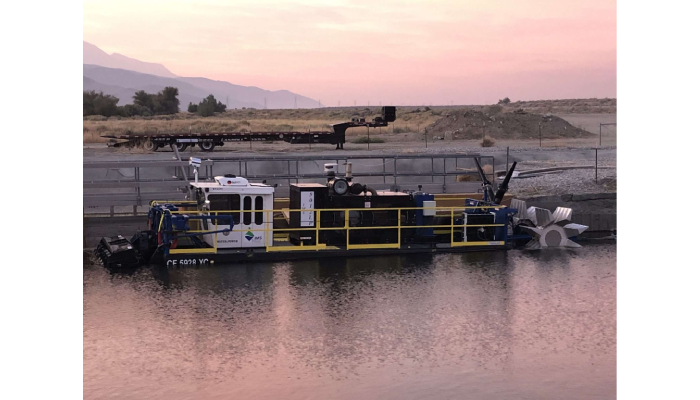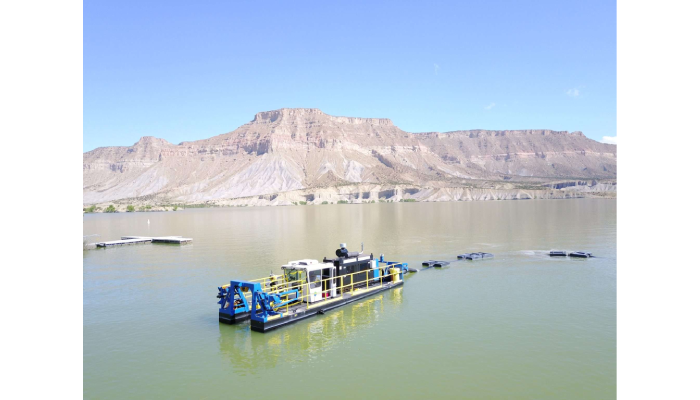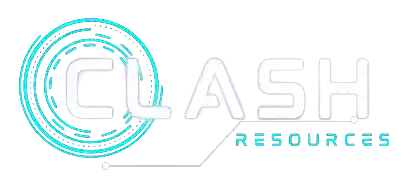
How to Prepare Your Lake for Dredging?
Preparing your lake for dredging starts with understanding why it’s necessary: sediment and muck buildup reduce water depth, harm fish, and cause algae blooms. You want to plan dredging every 3 to 5 years, ideally in early spring or fall, avoiding summer to protect wildlife. First, check where the sediment has piled up and how deep it is; make sure not to dig beyond the original bottom depth. Arrange proper permits and decide where you’ll put the removed material so it doesn’t wash back. Choose a dredging method that fits your lake size, manual work suits small ponds but pumps or pulley systems work better for bigger areas, and always keep safety in mind during cleanup.
Reasons to Dredge Your Lake or Pond
Over time, sediment, debris, and organic matter settle at the bottom of lakes and ponds, reducing water depth and limiting circulation. Lake dredge creates shallow zones that restrict water movement, leading to oxygen depletion which harms fish and aquatic plants. The accumulated muck also releases unpleasant odors and toxic gases when disturbed, making the water less enjoyable and healthy. Excess nutrients trapped in sediment fuel algae blooms and invasive weeds, disrupting the delicate ecosystem balance. Dredging removes these sediments, restoring the original depth and improving oxygen levels, which enhances habitat quality for aquatic life. It also helps control turbidity, stabilizes water levels to prevent shoreline erosion, and maintains navigable water for recreational activities. By dredging, you effectively address sediment-related water quality issues and support a healthier, more balanced lake or pond environment.

Choosing the Best Time for Dredging
Scheduling dredging at the right time is key to protecting your lake’s ecosystem and ensuring effective sediment removal. Ideally, dredging should occur every 3 to 5 years, depending on how much sediment has built up. Early spring is often the best choice since it happens before aquatic plants begin to grow, minimizing disruption to vegetation and wildlife. Fall is another good option because plants have died back, which helps reduce the impact on the lake’s natural environment. Avoid summer dredging whenever possible, as this is a critical period for fish spawning and wildlife breeding, and disturbing the lake during this time can cause lasting harm.
Choosing a dry weather window helps reduce sediment runoff and prevents muddy water from spreading beyond the work area. It’s also important to consider local climate patterns and water levels to avoid dredging during heavy rainfall seasons, which can lead to sediment spreading and further pollution. Checking local regulations is essential since some areas have seasonal restrictions that limit when dredging can be performed.
Additionally, coordinating dredging to minimize interference with recreational lake use benefits both the community and the project. After dredging, allow time for the water to clear before heavy use resumes, as turbidity can temporarily affect water quality. For example, planning dredging in early spring after ice melts but before boating season starts can offer a good balance between environmental safety and recreational access.
Steps to Prepare Your Lake for Dredging
Begin by surveying the lake to identify where sediment has built up and measure its depth accurately. Knowing these details helps set clear dredging limits based on the original lake or pond bottom depth, preventing over-dredging that could harm the shoreline. Next, arrange for sediment disposal or reuse sites well away from the water to avoid recontamination. It’s crucial to obtain all necessary permits and ensure compliance with local environmental regulations before starting any work. Select the appropriate dredging equipment for your lake size and gather all necessary tools. Plan safe access routes to dredging areas and establish worker safety protocols to prevent accidents. Mark dredging boundaries clearly to protect banks from erosion and avoid removing more sediment than needed. Inspect the shoreline and remove any debris that might interfere with equipment operation. Keep nearby residents or stakeholders informed about the dredging schedule and activities to maintain good communication. Finally, set up procedures to monitor water quality throughout the dredging process to minimize environmental impact and maintain a healthy ecosystem during the project.
- Survey sediment accumulation areas and measure sediment depth precisely
- Determine original lake or pond bottom depth to set dredging limits
- Identify and arrange sediment disposal or reuse sites away from water
- Obtain all necessary permits and comply with local environmental laws
- Select appropriate dredging equipment and gather necessary tools
- Plan for safe access to dredging sites and worker safety protocols
- Mark dredging boundaries to avoid over-dredging and bank erosion
- Inspect shoreline and remove debris that could interfere with equipment
- Inform nearby residents or stakeholders about dredging plans
- Establish procedures to monitor water quality during dredging
Manual Dredging Techniques for Small Ponds
Manual dredging is best suited for small ponds under 1,000 square feet with shallow sediment buildup, especially around the shallow edges where sediment tends to accumulate the most. Using hand tools like spades, shovels, and rakes, you can carefully remove sediment in manageable sections to avoid stirring up too much debris and clouding the water excessively. This method causes minimal disturbance to the pond’s ecosystem but is physically demanding, so it’s important to take regular breaks and work at a steady pace. Always wear protective gear such as gloves and boots, and avoid working in deep or unstable sediment areas to reduce safety risks. Collect the dredged material in buckets or wheelbarrows and transport it away from the pond to prevent recontamination. Manual dredging works well for spot maintenance and small-scale sediment removal but is not practical for full pond restoration due to its labor-intensive nature.
Using Pump Dredging for Small Lakes
Pump dredging is a practical choice for small lakes or ponds under one acre that have moderate sediment buildup. This method uses submersible gas or electric pumps connected to suction hoses to vacuum sediment from the lake bottom. Operators typically work from the shoreline outward, ensuring they cover the entire sediment area evenly. The sediment mixes with water to form a slurry, which is then discharged to designated settling or disposal zones away from the lake, preventing recontamination. To keep the process running smoothly, it’s important to monitor water levels and hose conditions regularly to avoid clogs. Having spare hoses and pump parts on hand helps minimize downtime. Since pump dredging requires a reliable power source, safety precautions around electricity or fuel use should always be observed. Controlling pump speed and suction depth can reduce water turbidity, helping maintain clearer water during dredging. Adding screens or filters on discharge lines further limits sediment spread into the environment. Finally, coordinating with local regulations on water discharge and turbidity ensures the dredging process complies with environmental standards. For example, a small backyard lake with a few feet of sediment buildup can be efficiently cleaned using this method, restoring water depth and improving aquatic health without extensive mechanical setup.
Drag Bucket Dredging for Larger Lakes
Drag bucket dredging is a practical choice for larger lakes where manual or pump dredging would be too slow or inefficient. This method uses a bucket made from wood, metal mesh, or modified drums designed to scoop up sediment from the lake bottom. The bucket is attached to cables or chains operated by winches or tractors positioned on shore. Operators drag the bucket along the bottom, collecting sediment in sections, then lift the sediment-filled bucket to shore to empty it into designated sediment basins. These on-shore basins allow the sediment to settle and water to drain off before proper disposal or reuse. Setting up drag bucket dredging requires mechanical equipment and a team familiar with safe operation. Positioning the winches and cables carefully helps cover the dredging area evenly and efficiently. Regular inspection of the equipment for wear and proper function is important to avoid breakdowns. Also, planning sediment handling is critical to prevent recontaminating the lake water, so depositing sediment away from the shoreline and managing runoff is essential. Though labor-intensive, drag bucket dredging offers a reliable way to restore depth and improve water quality in larger lakes.
Pulley Dredging System Setup and Use
The pulley dredging system is a practical option for lakes up to five acres with moderate sediment buildup. To set it up, install sturdy pulleys and cables securely across the width of the lake, anchored firmly on stable shore points that can handle the bucket’s weight. Use cables and pulleys rated for the expected load and environmental conditions to ensure safety and durability. A winch moves the dredging bucket along these cables, allowing precise control over the bucket’s depth and position on the lake bottom. This control lets operators target sediment removal without disturbing the entire lake bed. Typically, one person operates the winch to move the bucket, while others watch the bucket’s movement and manage sediment discharge. Once the bucket is filled, it is winched back to shore where the sediment is emptied into designated containment or disposal areas away from the water to prevent recontamination. Regular maintenance of the pulleys, cables, and winch is necessary to keep the system running smoothly. Proper operator training on safe handling and emergency procedures is essential to avoid accidents during dredging. This system offers an efficient, controlled way to remove sediment in medium-sized lakes without heavy machinery in the water.
Effective Techniques for Dredging Your Lake
To dredge your lake effectively, start by dividing the lake into manageable sections and work systematically from the shore outward. This approach ensures even sediment removal and helps maintain balance in the lake’s ecosystem. Aim to remove about 2 to 3 feet of sediment in each section, but be careful not to go deeper than the lake’s original bottom depth to avoid disturbing the natural substrate or harming aquatic life. Position your sediment discharge areas well away from the lake to prevent the stirred-up material from flowing back into the water. Conduct dredging activities during dry weather to reduce sediment runoff and keep water cloudiness to a minimum. Instead of aggressively digging, gently nestle your dredging equipment into the sediment, working slowly to keep turbidity low and protect water quality. Avoid over-dredging near the banks since this can cause erosion and destabilize the shoreline. Regularly monitor water clarity and the progress of sediment removal, adjusting your dredging depth or location as needed based on the sediment type you encounter. If sediment suspension becomes an issue, consider using silt curtains or barriers to contain the disturbed particles and protect the surrounding water. These techniques help maintain a healthier lake environment throughout the dredging process.
Tips to Prepare Shoreline and Manage Vegetation
Before dredging begins, clear the shoreline of any debris, fallen branches, and trash to ensure smooth access for equipment and personnel. Trim or remove excess vegetation that contributes to sediment runoff, but be mindful to plan vegetation management carefully to minimize disruption to wildlife habitats. Maintaining buffer strips of native plants along the shoreline helps stabilize soil and naturally filter runoff, reducing sediment entering the lake. On slopes leading into the lake, apply erosion control measures such as silt fences or mulch to prevent soil from washing into the water during dredging. Managing invasive aquatic plants before dredging is crucial, as they often accelerate sediment buildup; their removal helps reduce future sediment accumulation. Installing aeration systems and applying beneficial bacteria treatments prior to dredging can improve water quality by increasing oxygen levels and breaking down organic sediment. Always coordinate shoreline preparation activities with local environmental guidelines to protect the ecosystem and comply with regulations. Keeping shoreline access points clear not only facilitates dredging but also helps avoid unnecessary damage to the surrounding area.
Planning Sediment Disposal and Reuse
Proper planning for sediment disposal and reuse is key to a successful dredging project. First, identify disposal sites that are far enough from the lake to prevent any risk of water contamination. Avoid placing sediment on steep slopes or areas prone to flooding, as this can cause erosion or runoff back into the water. Check local regulations carefully to ensure your disposal methods meet environmental compliance and include sediment management plans in your dredging permits. Before disposal or reuse, test the sediment for contaminants to avoid spreading harmful substances. Consider beneficial reuse options such as using dried sediment as a soil amendment, garden fill, shoreline reinforcement, or landfill material. Prepare containment areas where sediment can dry out, allowing water to separate and reducing volume. Coordinate hauling logistics to minimize environmental impact and disturbance during transport. After placing sediment, monitor the disposal sites regularly for signs of runoff or erosion to protect nearby ecosystems. Taking these steps helps keep the lake healthy and makes the dredging process more sustainable.
When to Consult Professionals for Dredging Projects?
If your lake or pond is larger than 1 acre, it’s a good idea to bring in professionals who have the right equipment and experience. Larger bodies of water often need heavy machinery like drag buckets, winches, or pulley systems that go beyond what most DIYers can handle. Uneven or unknown sediment buildup also calls for experts who can measure and map sediment depth accurately to plan the dredging properly. Local regulations often require permits and have environmental rules that a professional will know how to navigate, especially if sensitive wildlife habitats or endangered species are involved. Handling sediment disposal can get complicated too, particularly if the material is hazardous or contaminated, requiring special care. If underwater obstacles like tree stumps, rocks, or debris are present, professionals can safely manage these challenges. Precise depth control might be necessary to protect liners, structures, or aquatic plants, which professionals are better equipped to maintain. Additionally, if you want to improve water quality with aeration or beneficial bacteria treatments alongside dredging, expert advice can ensure these systems work well together. Finally, safety concerns for workers and the public, especially in deep or unstable sediment zones, make professional involvement a smart choice to reduce risks.

